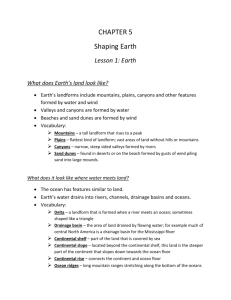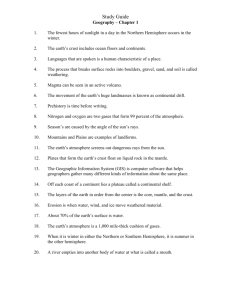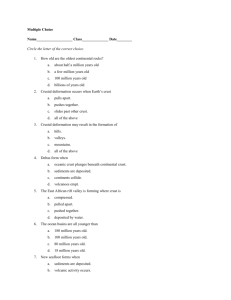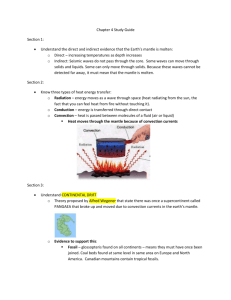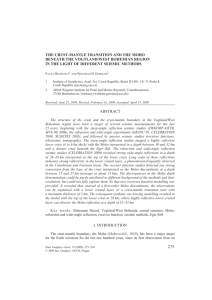P and S wave velocities
advertisement
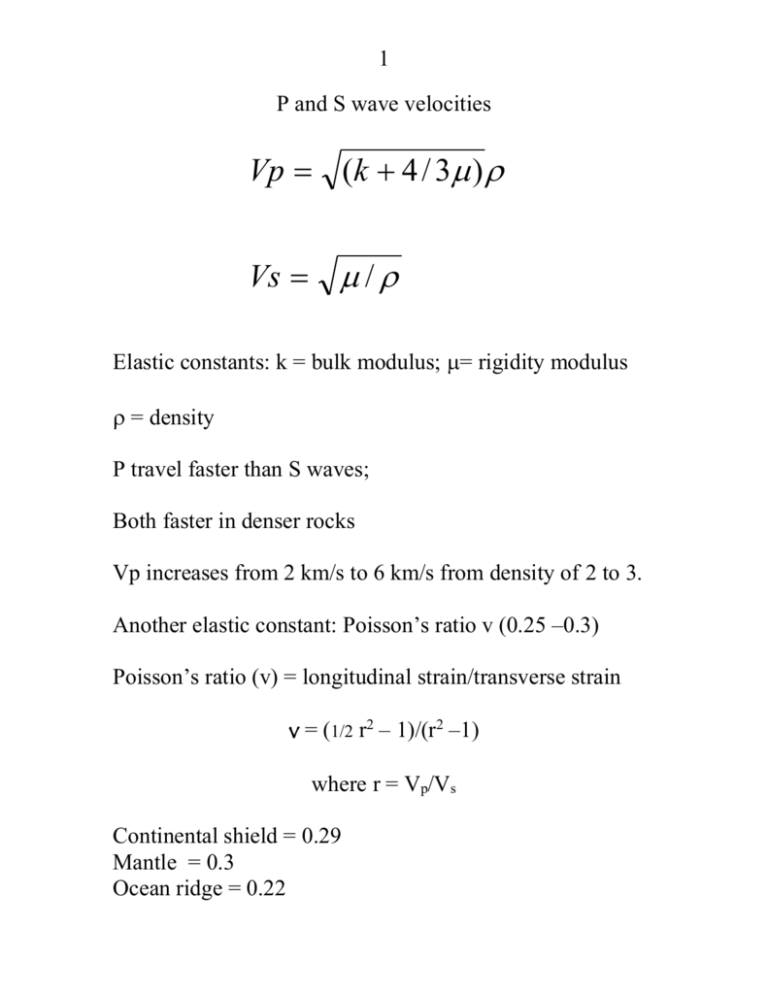
1 P and S wave velocities Vp (k 4 / 3 ) Vs / Elastic constants: k = bulk modulus; = rigidity modulus = density P travel faster than S waves; Both faster in denser rocks Vp increases from 2 km/s to 6 km/s from density of 2 to 3. Another elastic constant: Poisson’s ratio v (0.25 –0.3) Poisson’s ratio (v) = longitudinal strain/transverse strain v = (1/2 r2 – 1)/(r2 –1) where r = Vp/Vs Continental shield = 0.29 Mantle = 0.3 Ocean ridge = 0.22 2 Moho: base of crust; increase in Vp 7.5 to 8 km/s Moho sometimes offset by thrust/normal faults (Himalayas) Petrological Moho: eclogite in lower crust to mantle Types of crust: 1) Ocean, 2) Continental 3) Cransitional Ocean crust: 3 layers Sediment layer :0–1km Vp = 2-4 km/s Basement layer (basalt): 0.7 – 2 km 5 km/s Oceanic layer (gabbro+ ultramafics): 3 – 7 km; Vp = 6-7 km/s Moho at 3 – 15 km OCEAN RIDGES Fast > 7 cm/yr Slow <0.7 cm/yr Moho gradational ~ 1 km Poor axial rift graben Large magma chambers Sharp Well developed Sporadic 3 TRANSITIONAL CRUST Submarine plateaux (e.g. Ontong-Java) Arcs (oceanic and continental) Continental Rifts (RioGrande) Inland seas (Black sea; Caspian ) Continental crust: mean thickness 40 km Lower crust Vp= 7. km/s Upper crust ~ Vp= 6.5 km/s Shield: no sediment cover; old, stable: Canada, India Shield + platform = craton Rocks exposed = were 5 to 40 km deep Collisional orogens: Narrow elongate belts Asymmetric thrust vergence Foreland sedimentary basin on thrust side Ophiolites? Metamorphic/igneous belt 4 GRAVITY AND ISOSTACY (milligals) Types of gravity anomalies Bouger anomaly: observed gravity (+- corrections) Isostatic anaomaly= Bouger anomaly minus gravity due to roots) Free air anomaly = due to topography at surface Oceans and continents in approximate isostatic equilibrium Ocean crust = neg. Bouger anomalies –200 to -300 mgals Continental crust = pos. anomalies +200to +300 mgals HEAT FLOW (mWm-2) Heat transport: convection (mantle)- conduction (lithosphere) Heat flow = geothermal gradient x thermal conductivity 88% heat flow from mantle (ocean ridges, subduction, hot spots) 12% from radioactive decay in continents Shields have lowest heat flows (oldest) Ocean ridges high and variable 5 Young orogens, arcs, cont. rifts: high and variable Upper continental crust enriched in U, Th, K (incompatibles) Continental heat production (qo): qo = qr + AoD qr = rocks without radiogenic production (e.g mantle) Ao = radiogenic heat production D = slope of line = depth of radiogenic production In oceans, qo proportional to square root age of crust

